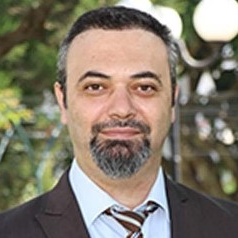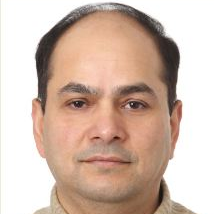Deep Learning for Sensor-Driven Medical Applications
A special issue of Sensors (ISSN 1424-8220). This special issue belongs to the section "Biomedical Sensors".
Deadline for manuscript submissions: closed (28 August 2023) | Viewed by 3585
Special Issue Editors
Interests: deep learning; medical image analysis; healthcare applications; secret sharing scheme & digital image security
Special Issues, Collections and Topics in MDPI journals
Interests: AI; machine learning; medical image processing
Special Issues, Collections and Topics in MDPI journals
Interests: MAC; routing protocols for next-generation wireless networks; wireless sensor networks; cognitive radio networks; RFID systems; IoT; smart city; deep learning; digital convergence
Special Issues, Collections and Topics in MDPI journals
Special Issue Information
Dear Colleagues,
Recent advances in sensing technologies have enabled the healthcare sector to improve the quality of its services. Furthermore, the design of small and lightweight smart sensors has enabled systems to act as a vital part of advanced developments in unobtrusive and unsupervised approaches to home-rehabilitation and the continuous monitoring of patients’ health status. In the present healthcare system, the application of deep learning (DL) is widespread to accomplish enhanced quality of service in disease diagnosis, acute disease detection, image analysis, drug discovery, drug delivery, and smart health monitoring. This Special Issue on “Deep learning for Sensor-Driven Medical Applications” focuses on new sensing technologies, measurement techniques, and their applications in medicine and healthcare. We offered this topic, being aware of the fundamental role that smart sensors can have in enhancing the quality of healthcare services in both acute and chronic conditions as well as for prevention towards a healthy life and active aging. This Special Issue welcomes both original research papers and review articles focusing on innovative ideas. Topics of interest include, but are not limited to:
- Sensor-enabled medical data for disease diagnosis and monitoring;
- Computer aided diagnosis models;
- Wearables and Telemedicine;
- Data Security and Privacy Mechanisms in sensor enabled healthcare system;
- Deep learning for medical data;
- Computational intelligence for medical data;
- Big data analytics for healthcare applications;
- Sensors and Systems for Brain Computer Interfaces.
Dr. Shankar Kathiresan
Prof. Dr. Seifedine Kadry
Dr. Gyanendra Prasad Joshi
Guest Editors
Manuscript Submission Information
Manuscripts should be submitted online at www.mdpi.com by registering and logging in to this website. Once you are registered, click here to go to the submission form. Manuscripts can be submitted until the deadline. All submissions that pass pre-check are peer-reviewed. Accepted papers will be published continuously in the journal (as soon as accepted) and will be listed together on the special issue website. Research articles, review articles as well as short communications are invited. For planned papers, a title and short abstract (about 100 words) can be sent to the Editorial Office for announcement on this website.
Submitted manuscripts should not have been published previously, nor be under consideration for publication elsewhere (except conference proceedings papers). All manuscripts are thoroughly refereed through a single-blind peer-review process. A guide for authors and other relevant information for submission of manuscripts is available on the Instructions for Authors page. Sensors is an international peer-reviewed open access semimonthly journal published by MDPI.
Please visit the Instructions for Authors page before submitting a manuscript. The Article Processing Charge (APC) for publication in this open access journal is 2600 CHF (Swiss Francs). Submitted papers should be well formatted and use good English. Authors may use MDPI's English editing service prior to publication or during author revisions.








